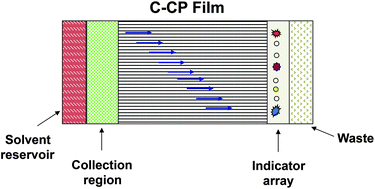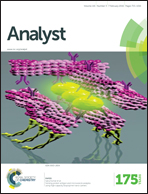Parallel, open-channel lateral flow (immuno) assay substrate based on capillary-channeled polymer films
Abstract
Presented here is a novel implementation of polypropylene capillary-channeled polymer (C-CP) films, functionalized for bioaffinity separations and implemented as a platform for lateral flow (immuno) assays. The parallel ∼80 μm × 80 μm channels pass test solutions down the 30 mm film length via spontaneous wicking action, setting up the possibility for immobilizing different capture agents in the respective channels. The base-film modification process is divided into two steps: ultraviolet light treatment to improve hydrophillicity of the polypropylene substrate and the physical adsorption of a functionalized lipid tethered ligand (LTL) as a selective capture agent. The entire modification procedure is performed under ambient conditions in an aqueous solution without extreme pH conditions. In this demonstration, physical adsorption of a biotinylated-LTL onto the UV-treated PP surface selectively captures Texas Red-labeled streptavidin (SAv-TR) in the presence of enhanced green fluorescence protein (EGFP), which passes without retention in less than 5 s. In addition to the fluorescence imaging of the protein solutes, matrix assisted laser desorption/ionization-mass spectrometry (MALDI-MS) was used to confirm the formation of the LTL-SAv conjugates on the channel surface as well as to demonstrate an alternative means of probing the capture step. The present effort sets the groundwork for further development of C-CP films as a parallel, multi-analyte LFA platform; a format that to-date has not been described.


 Please wait while we load your content...
Please wait while we load your content...